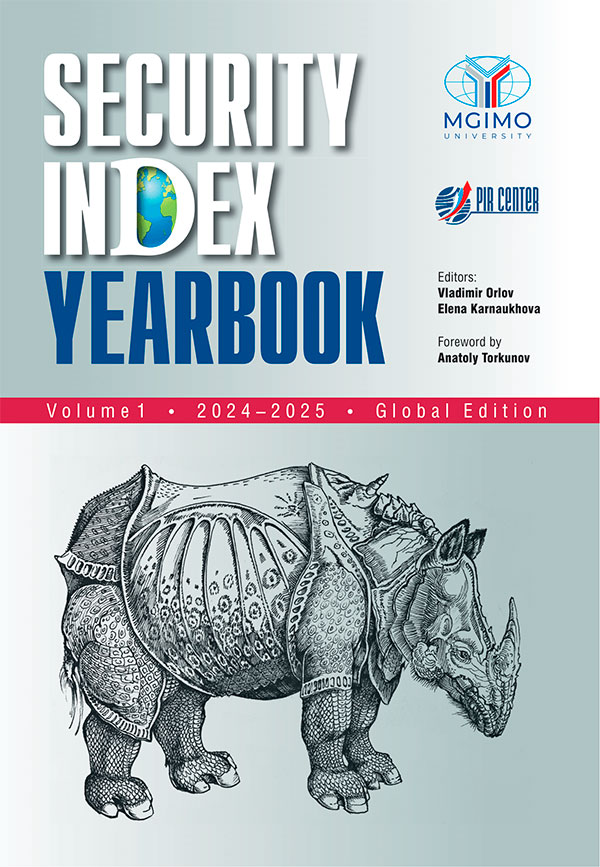... objects on the near-Earth orbits, including space stations.
Sonay Sorac:
Discourse Has Changed From Space as a Sanctuary to the Next Warfighting Domain
The Treaty does not impose specific restrictions on the peaceful use of nuclear energy in space. The Russian Space Agency is now proceeding with an ambitious plan to create an unmanned nuclear-powered spaceship for Solar system exploration (the Zeus project). However, the first orbital flight test of the reactor is planned for no earlier than 2030, which means ...
... which Lunar Gateway is an integral part.
Russia — UAE Cooperation in the Energy Sector. RIAC and ECSSR Policy Brief
Some were quick to conclude that the UAE
has taken Russia’s place in Artemis
. As an argument, they cited the refusal of Roscosmos, Russia’s space state corporation, to participate in this initiative due to its “too apparent U.S. orientation”, despite the
Joint Statement on Cooperation in Deep Space Exploration, Research and Development
, signed by Roscosmos and NASA on the margins of ...
Russia and China as prominent spacefaring nations could contribute to the understanding of the space economy—space security nexus, utilizing existing levers to make space diplomats and space companies agree upon acting in a mutually beneficial, sustainable manner
When we talk ...
... as a separate branch of the military. Currently, however, Russia is in the process of partly rolling back this process, with the space forces, the anti-aircraft defence force and even the military aviation being absorbed by the Air Force to form the Russian Aerospace Forces.
The new military branches will command unprecedented satellite constellations: as the satellite systems will not have any radically different tasks, they will keep in line with the general trend of establishing super-large constellations ...
... autonomous space-based interceptors can be created remains a moot point. On the other hand, should such a system be created it could undermine the existing strategic stability system.
Two Foundations of Strategic Stability
Pavel Luzin:
Public and Private Space: Russian Competitive Opportunities
From the very beginning, space exploration has been closely linked to nuclear proliferation. This process has two dimensions: vertical, i.e. the quantitative and qualitative development of nuclear arsenals, and horizontal,...
... countries got a new breath: Russia had to search for someone to replace American supplies of electronic components used in build-up of satellites. China came to the fore. Balance of interests was found and states started complementing each other’s space programs (Russia
provides
engines for acquiring micro radio electronics).
Thus, all five BRICS countries have already been involved in exploration of outer space regardless of the goals pursued. Though usually the latter do interlace at the point of willingness ...
... space, existing programmes include the modification of the GPS system and developing the promising ideas on the use of new physical capabilities that were generated during the Nixon administration (1969–1974).
NASA
Pavel Luzin:
Public and Private Space: Russian Competitive
Opportunities
The Russian space programme is similarly dominated by the technical developments of the past, in this case, those that appeared during Soviet times – from the Soyuz spacecraft (1967) to the Strela and Rokot carrier ...
... knowledge and technologies. And today this understanding is the basis for goal-setting not only for Americans and Europeans, but also in Beijing, Tokyo, and New Delhi. It would be a grave mistake if the URSC functions in the same paradigm as existing Russian space enterprises and holdings, which maintain productive capacity at the minimum sufficient level and service the needs of government agencies and, at times, state-owned companies. Of course, this approach assumes that the Russian satellite systems for ...
... astronauts and cargo to the ISS. US Shuttle spacecraft were flying to the station prior to July 2011 but the programme has since been put on hold, with manned flights from US territory scheduled to resume only by 2017, from a new technological platform. Russian spacecraft deliver most of the cargo into orbit and, in 2013, NASA had already paid Russia $424 million for taking six of its astronauts into space in 2016
[19]
.
So what is the West trying to achieve by slapping symbolic and, at first sight, irrelevant ...
... space sector.
Republic of Korea is very much interested in widening cooperation in the aviation and space sector. In 2004, an inter-governmental agreement was signed paving the way for the
first cosmonaut from South Korea
to orbit the earth on board a Russian spacecraft in April 2008. Russian scientists provided assistance to ROK in setting up a space center on Naro Island. Russia and ROK also agreed to collaborate to design and produce the South Korean Space Rocket Complex (SRC) with the light class Korea ...



